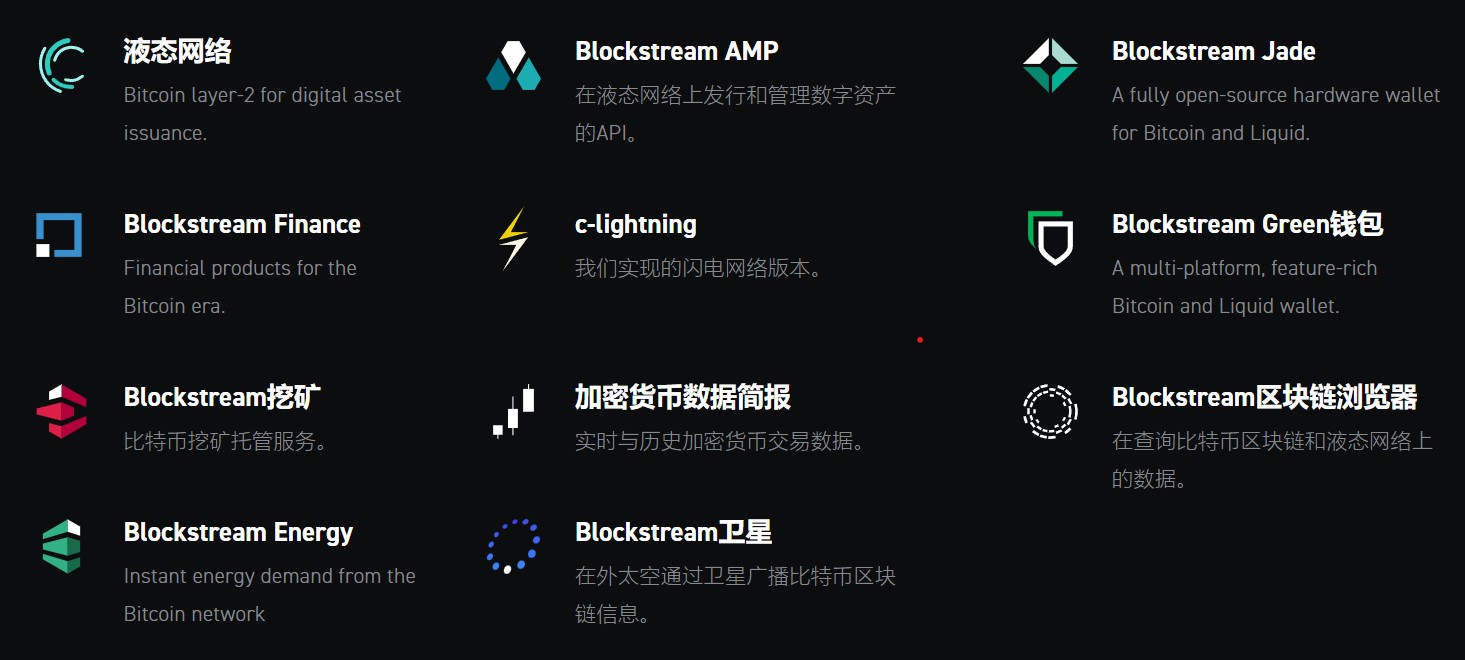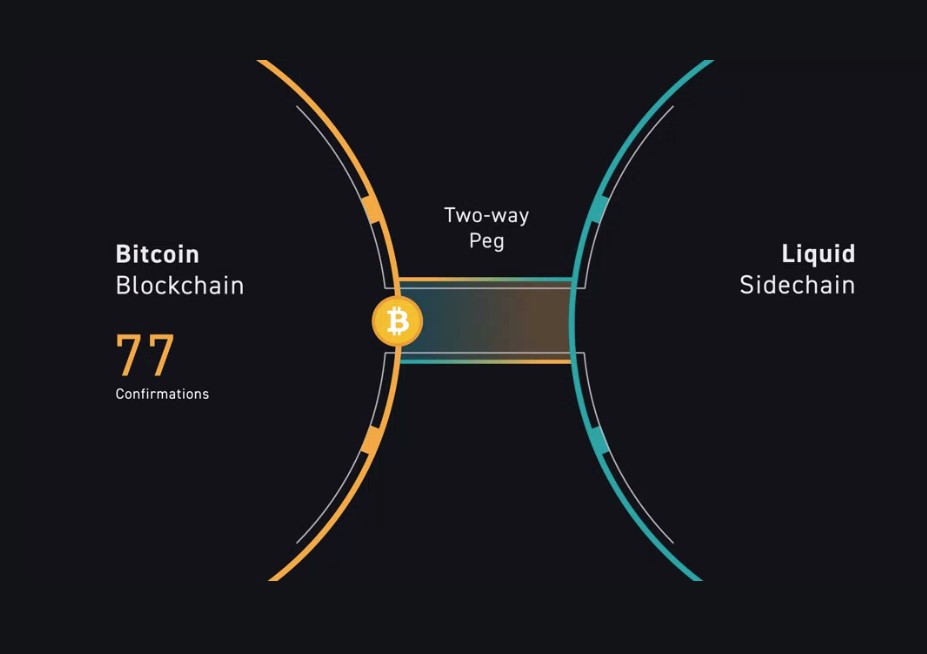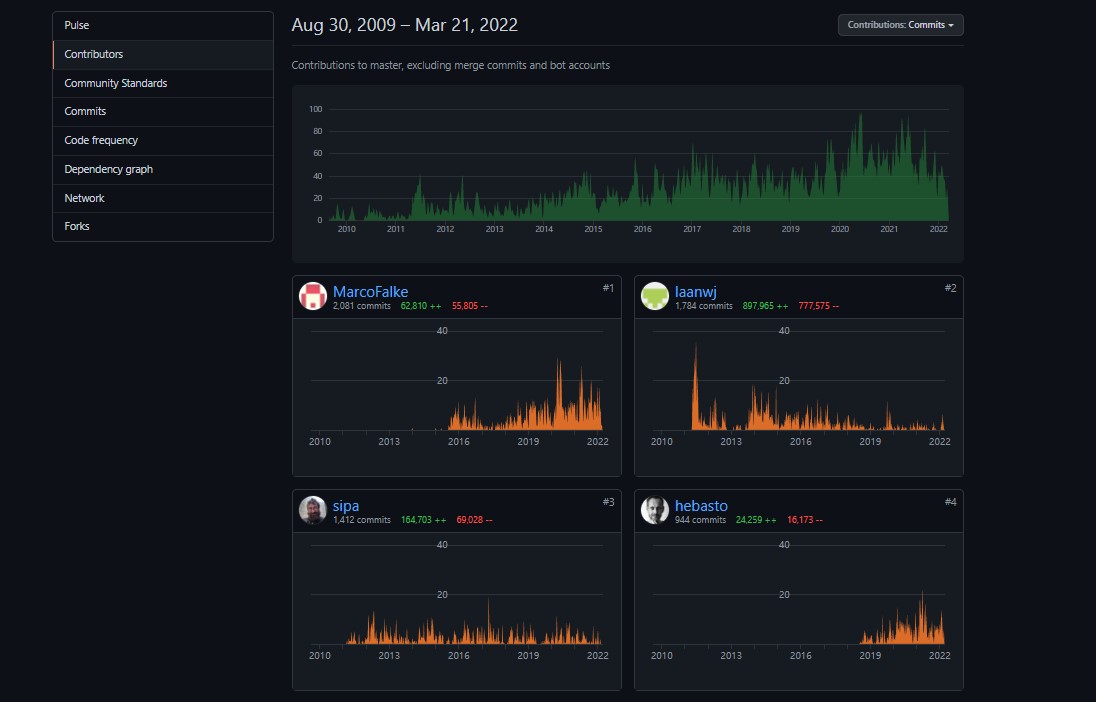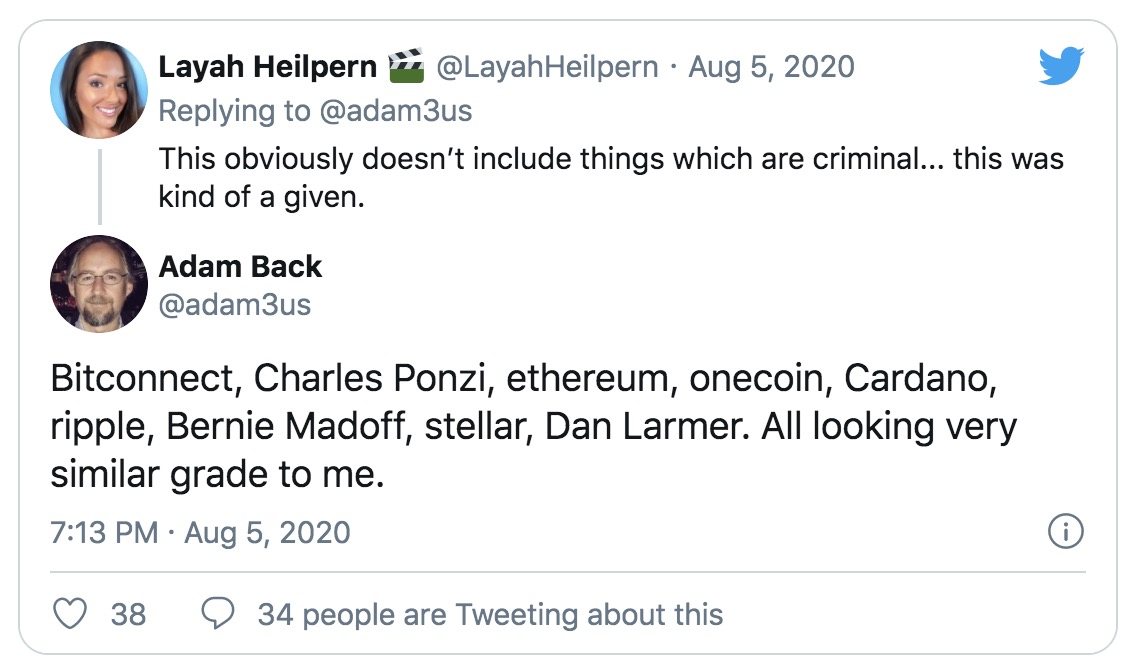Behind El Salvador's Bitcoin Bond: "Old Hand" Blockstream and the Evolving Bitcoin
Author: Yang Shu, ForesightNews
On March 20, El Salvador indicated that it might postpone the issuance of Bitcoin bonds due to international turmoil. The country had originally planned to issue $1 billion in Bitcoin bonds between March 15 and 20, which would be launched on the Bitcoin sidechain Liquid created by Blockstream, with a coupon rate of 6.5%.
"The funds raised from the bond issuance will be used to build a city called Bitcoin City, and this bond issuance will make El Salvador a new global financial center," said Samson Mow, then Chief Strategy Officer of Blockstream, at the El Salvador Bitcoin bond conference in November 2021.
As the Bitcoin sidechain Liquid behind the El Salvador Bitcoin bonds, and with Blockstream backing Liquid, what role do they play in the world of Bitcoin?
Blockstream's Involvement in the "Full Bitcoin Industry Chain"
In August 2021, Bitcoin and blockchain infrastructure company Blockstream completed a $210 million Series B funding round and simultaneously acquired the Israeli ASIC chip design team Spondoolies, marking Blockstream's gradual expansion from a software-centric business to upstream in the Bitcoin industry chain.
Prior to this, Blockstream's commercial product line mainly focused on the Bitcoin sidechain "Liquid" ecosystem, Bitcoin mining-related services, and some data-related businesses, aiming to expand and strengthen the Bitcoin ecosystem.
Product Matrix of the "Bitcoin Full Package"
Blockstream's early product line primarily served institutional clients with Liquid sidechain solutions, and later ventured into consumer products by acquiring the Bitcoin wallet Green Wallet.
At the same time, Blockstream also maintains and iterates several free product lines in the Bitcoin ecosystem, such as the Bitcoin full node satellite network Blockstream Satellite, multi-signature wallet Blockstream Green, and Lightning Network client c-lightning, among others.

Although Blockstream's involvement in the development of Bitcoin Core is at the forefront of software development, the upstream of the entire Bitcoin industry chain also includes the mining industry that participates in consensus. Therefore, they announced the launch of Bitcoin mining services in early 2020, collaborating with companies like Norwegian listed company Aker, Square, and BlockFi to engage in Bitcoin mining.
In August last year, Blockstream also launched the "Blockstream Energy" service, which helps energy producers sell excess electricity to miners, thereby providing scalable energy demand for power generation projects through Bitcoin mining, improving generation efficiency, and enhancing the economics of renewable energy projects globally, especially in remote areas:
"Blockstream Energy" specifically installs modular mining units (MMUs) on-site, allowing energy producers to dynamically provide power to the grid, the Bitcoin network, or a combination of both, and automatically allocate power based on daily or seasonal demand fluctuations, accelerating the return on investment for renewable energy investments and incentivizing further investment in renewable and alternative energy usage.
From the perspective of chip manufacturing, Blockstream announced the acquisition of the intellectual property of Bitcoin mining hardware manufacturer Spondoolies at the same time as its public Series B funding, with Spondoolies' core team joining Blockstream to focus on ASIC chip design and manufacturing, filling a gap for Blockstream in this area.
Additionally, Blockstream launched the Blockstream Mining Note (BMN), a Bitcoin mining token circulating on Liquid for qualified investors, with mining facilities located in Georgia, USA, and Quebec, Canada.
With the mining sector's layout being perfected, Blockstream now covers almost all dimensions of the product matrix related to Bitcoin development, institutional services, and mining.
Bitcoin Sidechain "Liquid"
The key core of Blockstream's "Bitcoin Full Package" is "Liquid."
"Liquid" is the Bitcoin sidechain mentioned earlier, on which El Salvador plans to issue Bitcoin bonds. It can be simply understood as a "smart contract layer based on Bitcoin":
As a second-layer network for Bitcoin, it allows the issuance of security tokens and other digital assets, aiming to provide financial products and services through the Bitcoin network and to be used for the settlement of financial assets.

Currently, the Bitcoin network ecosystem can be simply divided into four basic structures:
- The main chain, which is primarily responsible for the value system of Bitcoin, carrying the decentralization and security of Bitcoin and the value orientation represented by the Bitcoin community;
- The second layer, represented by the Lightning Network, focusing on expanding the payment experience of Bitcoin;
- The sidechain, where the smart contract components are mainly placed, with the most important function of the sidechain being to add smart contract applications to the Bitcoin ecosystem;
- Cross-chain, where almost all mainstream public chains have introduced Bitcoin into their ecosystems through cross-chain bridges, and within their ecosystems (especially Ethereum), they are used to develop Bitcoin-related DeFi projects;
The "Liquid" sidechain is also the core product of Blockstream. Although other products are interconnected, priority is given to the Liquid network as the most important product line. "For example, the wallets we develop will ultimately connect to the Liquid network, so the wallet's profit model is secondary; the main focus is on how to grow the Liquid network."
Blockstream: The "Old Gun" in the Bitcoin World
In 2014, as Ethereum began its presale, the Mt. Gox hack occurred, and the Bitcoin community's scaling debate intensified, the entire crypto world focused on these few events that had a profound impact on the industry.
At the same time, Blockstream, which had been established for less than a few months, secured $20 million in Series A funding and clarified its project positioning at that time—expanding the functionality of the Bitcoin protocol layer (sidechains).
The company boasts a formidable lineup, led by former HashCash developer Adam Back; early developer of e-cash and founder of Zero-Knowledge Systems Hammie Hill, both of whom are foundational products of Bitcoin.
In addition, Blockstream has an all-star development team, including Gregory Maxwell, Jonathan Wilkins, Matt Corallo, and Pieter Wuille, who later became leaders in Bitcoin Core development; Jorge Timon, project lead of Freicoin; and former NASA engineer Mark Friedenbach, among others.
The "Opposition" in the Bitcoin Scaling Debate
In the Bitcoin scaling debate, community leaders like Gavin Andresen and Bitmain were proponents of scaling, while Blockstream, represented by core developer Gregory Maxwell, was the opposition.
Proponents of scaling argued that the network congestion issue must be resolved immediately; otherwise, as the user base expands, payment delays will become evident, and transaction fees will soar to alarming levels, which is unacceptable for Bitcoin, which aims to be "electronic cash." Gavin Andresen bluntly stated that "rising Bitcoin transaction fees will drive the poor away from Bitcoin."
The opposition, however, believed that the congestion issue could and should be resolved in the long term through second-layer networks, as scaling could only address short-term congestion. As more people flock to Bitcoin, the already scaled Bitcoin would have to scale again, and such an approach seems endless. Therefore, they advocated for maintaining the Bitcoin network at 1MB while launching second-layer solutions like Segregated Witness and the Lightning Network outside the Bitcoin network.
The points of contention between the developers and miner representatives stemmed from mutual distrust:
- Developers did not trust miner representatives, believing that mining pools and the large companies operating them had usurped the voice of miners, and industrialized mining had become a centralized commercial activity, with "mining barons" undermining the decentralized essence of digital currencies;
- Miner representatives believed that once the Lightning Network was truly established, the vast majority of transactions would occur on the second-layer network, which would ultimately lead to absolute centralization, with central nodes monopolizing transaction channels. The underlying network would become a settlement channel for the second-layer network's central nodes, and most people would never use the underlying network in their lifetime, contradicting Satoshi Nakamoto's original intention in establishing Bitcoin.
During the subsequent New York meeting aimed at negotiation, due to various disagreements, Samson Mow, representing Bitcoin Core and Blockstream, was denied entry.
The subsequent disputes and conflicts over the direction are well-known, and with the Pandora's box of Bitcoin forks like BCH being opened, everything became irreversible.
The Controversy of "Bitcoin Development" and "Corporate Organization"
As of the latest $210 million Series B funding round mentioned above in November last year, Blockstream had publicly disclosed its funding information three times: $21 million in seed funding in November 2014, $55 million in Series A funding in February 2016, and a strategic investment from Digital Garage (DG Lab Fund) in November 2017, with the specific amount undisclosed.
It is also important to clarify that Bitcoin Core is an open-source project responsible for maintaining and releasing the Bitcoin client software "Bitcoin Core" (including full node validation and Bitcoin wallet) and some related software maintenance.

Among the core developers and contributors involved in the Bitcoin Core project, a significant portion are employees of Blockstream, funded by Blockstream for their development work. This has led to a dual paradoxical controversy regarding "Bitcoin development" and "corporate organization":
- On one hand, Blockstream has gradually gathered some of the best developers in the Bitcoin community, contributing to the daily code development and maintenance of Bitcoin;
- On the other hand, this group of developers participates in the open-source project differently from the original Bitcoin core developers—they are directly employed by Blockstream and are salaried company employees;
Additionally, Blockstream's financing and business development are centered around Bitcoin products like second-layer networks, which has led some community members to question the independence of Bitcoin core developers, and concerns within the community have surfaced:
Core members represented by Blockstream have lost their independence and impartiality in development, posing a risk of turning the entire Bitcoin base layer into a subordinate of the second-layer network, with some even stating, "Blockstream controls the Bitcoin code."
Daily Sparring with the Ethereum Community
"Building a truly decentralized financial system based on Ethereum is impossible; it can only be achieved through Bitcoin, the Lightning Network, and Liquid." Blockstream can be seen as the most influential "KOL organization" in the Bitcoin community, with both CEO Adam Back and COO Samson Mow frequently criticizing the Ethereum community.
Adam Back once stated in response to others that Ethereum is similar to a Ponzi scheme, while Buterin believes Ethereum is rising, and the historical tide will not favor (Bitcoin) maximalists.

In the subsequent heated debate between Samson Mow and Vitalik, they even questioned each other about Ethereum and Liquid, stating, "No one will build any secure (financial) systems on the Ethereum platform. If you want a token, you can issue it on the Liquid network, and you can thank me later."
In a sense, Blockstream represents the entire Bitcoin landscape—the Bitcoin scaling debate, Lightning Network and sidechain solutions, and competition with other coins like Ethereum, all intertwined and complex.
The Evolving Bitcoin Network
In 2021, in the field of blockchain development, Ethereum's "London Upgrade" in July dominated media coverage.
In contrast, unlike the boundless innovations emerging in the Ethereum ecosystem, Bitcoin's "Taproot Upgrade" in November received little attention, and many users in the industry felt that Bitcoin's development might be stagnating, which is a true reflection of the gradual neglect of the Bitcoin network's development process by the market.
Especially since 2020, it seems that people have gradually accepted Bitcoin's positioning as "digital gold," forgetting the "global currency" payment attributes that once sparked heated debates and even forks in the industry. It appears that upgrades in technical applications are no longer seen as that important.
Although most mainstream DeFi still exists within the Ethereum ecosystem, the Bitcoin network is continuously evolving, especially with last year's Taproot upgrade bringing new combinations and possibilities in performance, privacy, and even smart contracts, which may gradually incorporate more complex programming capabilities in the future.
Meanwhile, Bitcoin's payment functionality has now largely shifted to Layer 2, particularly the Lightning Network. El Salvador, as the only country in the world to recognize Bitcoin as legal tender, has utilized the Lightning Network, and perhaps other developing countries will follow suit (including those that recently made headlines for other reasons).
According to statistics from the 1ML website, as of March 21, the amount of Bitcoin locked in the "Lightning Network," dedicated to small Bitcoin payments, has surpassed 3,500 BTC (3,574 BTC), with over 35,000 nodes (35,662 nodes).

The "Bitcoin bonds" that the El Salvador government plans to issue on the Bitcoin sidechain "Liquid" will allocate half of the raised funds to purchase Bitcoin and hold it for five years, while the rest will be used to fund Bitcoin-related construction projects.
With Bitcoin as the underlying asset guarantee for issuing bonds, can El Salvador, after adopting Bitcoin as a legal currency, become a key variable in further promoting the deep development of the Bitcoin network through Blockstream's Liquid network, especially in exploring greater possibilities for Bitcoin's financial attributes beyond its payment properties?
Bitcoin is always worth looking forward to.









